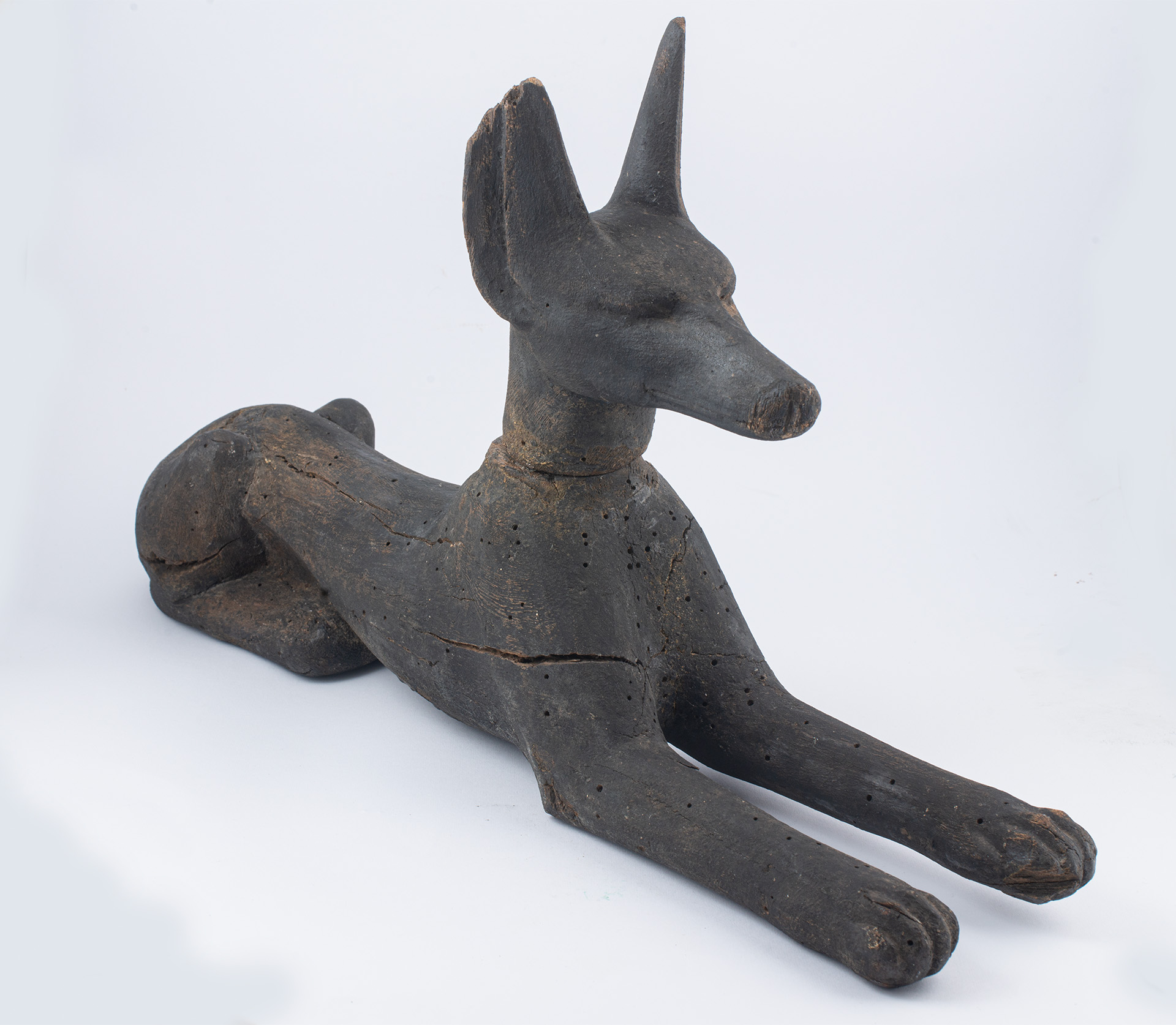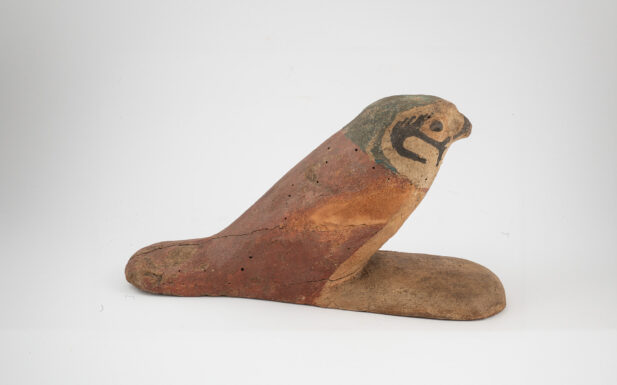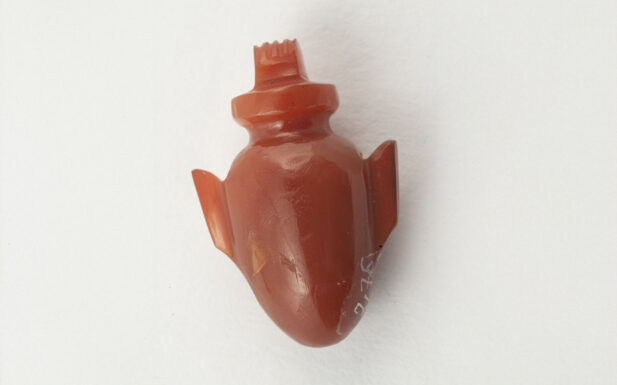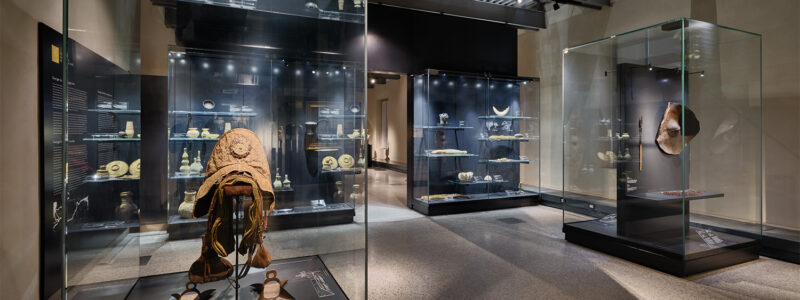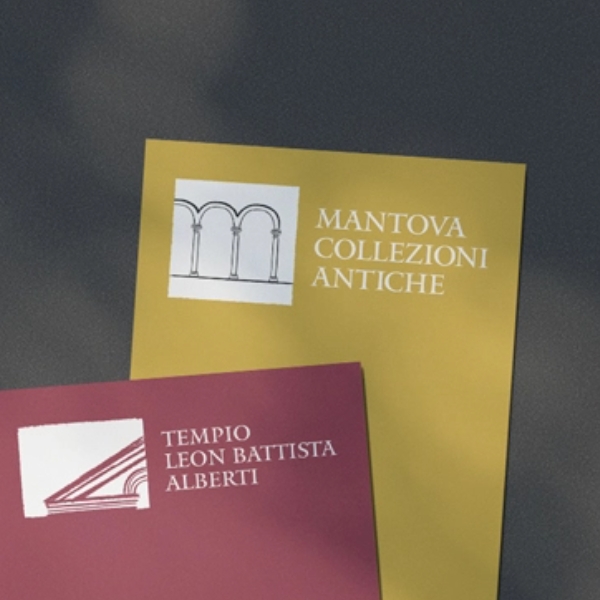The two statues depict a jackal in a vigilant, guardian position. Each figure originally consisted of three separate wooden parts, joined together with pins: the body, the head and a long tail, which has been lost in both cases. They are covered with a thick layer of so-called black varnish, a mixture of organic substances such as bitumen, conifer and Pistacia resins, which was widely used in funerary contexts and whose colour was associated by the Egyptians with concepts of fertility and rebirth.
Some details in the jackal’s head that are larger and more accurately executed are painted in yellow. These statues almost certainly come from naos cysts for canopic jars or from sarcophagi with a quadrangular case and vaulted lid of the qeresw type. Jackals and wooden hawks adorned their lids as additional protection for their contents. The jackal was in fact the sacred animal to Anubis, the patron god of necropolises and the embalming process, but also to Wepwawet, another deity associated with burial grounds, where jackals were at home.
Third Intermediate Period (c. 1080-655 BC) – Late Period, 26th Dynasty (664-525 BC)
wood, ‘black varnish’ and traces of polychromy

